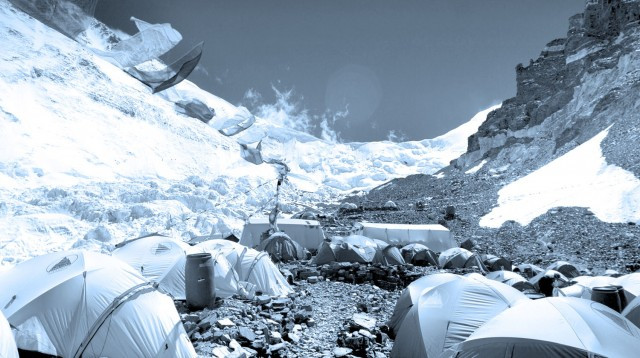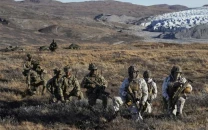Indian woman is first female amputee to climb Everest
Arunima Sinha reached the peak on Tuesday morning after a slow climb from Everest Base Camp.

Arunima Sinha, 26, from the northern state of Uttar Pradesh, reached the peak on Tuesday morning after a slow climb from Everest Base Camp. PHOTO: AFP
Arunima Sinha, 26, from the northern state of Uttar Pradesh, reached the peak on Tuesday morning after a slow climb from Everest Base Camp.
"She left high camp at 6pm on Monday evening and arrived at the summit at 10:55 am local time on Tuesday," Ang Tshering Sherpa, founder of Asian Trekking, the company that organised the expedition, told AFP.
Sinha's guides were concerned about her slow pace until the team reached an 8,750-metre junction that climbers pass through on their way to the top of the mountain, Sherpa said.
"But once she got to that point, she gained energy and confidence and started moving really quickly," Sherpa said.
Two years ago, the former national-level volleyball player was shoved from a moving train by thieves when she reportedly attempted to fight them off as they tried to stealing her purse.
A passing train crushed her left leg, forcing doctors to amputate below the knee to save her life.
"At that time everyone was worried for me. I then realised I had to do something in my life so that people stop looking at me with pity," Sinha told Indian TV before leaving for the climb.
The Tata Steel Adventure Foundation, which sponsored Sinha's climb, contacted Sherpa's Asian Trekking company in 2012 about providing training and guiding for the expedition.
"We knew her story, we knew she recovered well from the amputation because she's a very active athlete," Sherpa said, adding that the company trained her on Nepal's Island Peak during the 2012 spring climbing season.
Hundreds of climbers have thronged the world's highest peak during a window of good weather. May is considered the best time for climbing in the Nepalese Himalayas because of mild weather and some 300 people have reached the 8,848-metre high Everest so far this year.
The mountain has become a popular symbolic pilgrimage site for record-setting, awareness-raising, and pledge drives for charities, which have increased crowds on the peak.
Tom Whittaker, a British mountaineer, became the first person with a disability to summit the peak in 1998 after a car crash almost two decades earlier had forced him to have his foot amputated.


















COMMENTS
Comments are moderated and generally will be posted if they are on-topic and not abusive.
For more information, please see our Comments FAQ